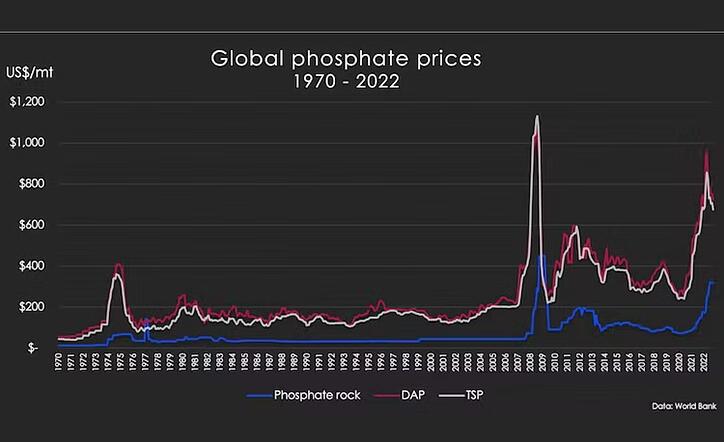By Julia Martin-Ortega, Brent Jacobs and Dana Cordell
Without phosphorus food cannot be produced, since all plants and animals need it to grow. Put simply: if there is no phosphorus, there is no life. As such, phosphorus-based fertilisers – it is the “P” in “NPK” fertiliser – have become critical to the global food system.
Most phosphorus comes from non-renewable phosphate rock, and it cannot be synthesised artificially. All farmers therefore need access to it, but 85% of the world’s remaining high-grade phosphate rock is concentrated in just five countries (some of which are “geopolitically complex”): Morocco, China, Egypt, Algeria and South Africa.
Seventy per cent is found in Morocco alone. This makes the global food system extremely vulnerable to disruptions in the phosphorus supply that can lead to sudden price spikes. For example, in 2008 the price of phosphate fertilisers rocketed 800%.
At the same time, phosphorus use in food production is extremely inefficient, from mine to farm to fork. It runs off agricultural land into rivers and lakes, polluting water which in turn can kill fish and plants, and make water too toxic to drink.

In the UK alone, less than half of the 174,000 tonnes of imported phosphate are actually used productively to grow food, with similar phosphorus efficiencies measured throughout the EU. Consequently, the planetary boundaries (the Earth’s “safe space”) for the amount of phosphorus flow into water systems have long been transgressed.
Unless we fundamentally transform the way we use phosphorus, any supply disruption will cause a global food crisis since most countries are largely dependent on imported fertilisers. Using phosphorus in a smarter way, including using more recycled phosphorus, would also help already stressed rivers and lakes.
We are currently experiencing the third major phosphate fertiliser price spike in 50 years, thanks to the COVID-19 pandemic, China (the biggest exporter) imposing export tariffs, and Russia (one of the top five producers) banning exports and then invading Ukraine. Since the start of the pandemic, fertiliser prices have risen steeply and at one point had quadrupled within two years. They are still at their highest levels since 2008.
Post time: Feb-02-2023

